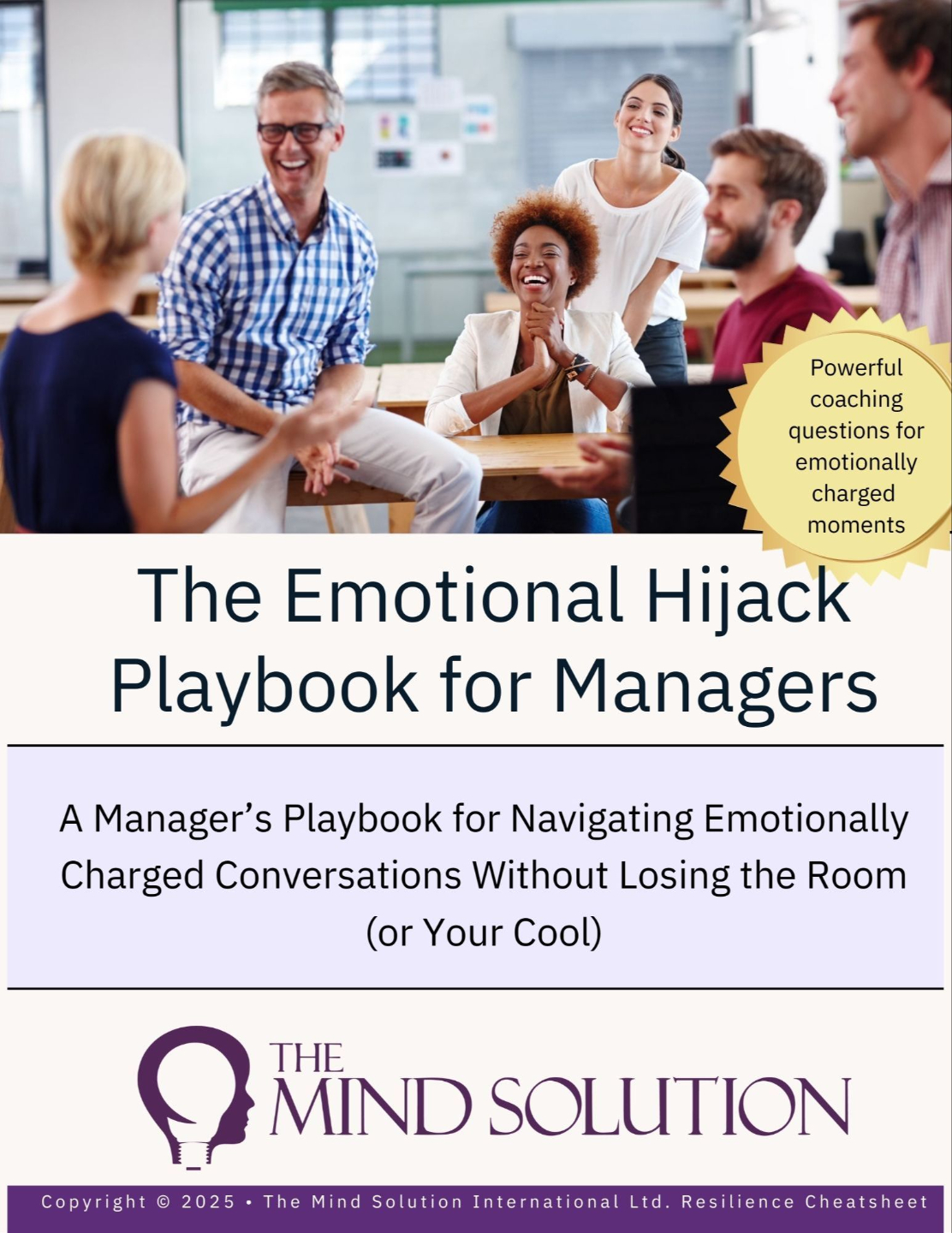The Wellbeing Buffet Dilemma: Do Your Employee Wellbeing Programs Need to Cover Everything?
Jun 29, 2025
You’re an HR professional with a genuine desire to create impactful employee wellbeing solutions. You look at the vast landscape of options, and it’s like standing in front of an overflowing buffet: Do we need mental health awareness training for anxiety? What about ADHD support? Menopause training? Workplace trauma? And with all the signs of burnout, should we offer specific HR burnout training?
It’s a lot, isn't it? The sheer number of wellbeing programmes in the workplace available can feel utterly overwhelming, and the pressure to ensure you're doing "enough" is intense.
I've been in that exact spot. Even in my early HR days, grappling with foundational elements of health and wellbeing in the workplace, the questions mounted.
Today, the complexity has multiplied exponentially. You're trying to figure out if an employee wellbeing platform is the golden ticket, or if it's just another expense adding to the noise.
You’re asking: Should we cover every single aspect of health and wellbeing, from investing in mental health awareness training for every condition, to specific programs for everything under the sun?
My direct answer, drawn from years in HR and a decade as a wellbeing expert, is this: No, your employee wellbeing programs do not need to cover everything. In fact, trying to do so often leads to diluted impact and increased overwhelm for both you and your employees.
The Spectrum of Need vs. The Strategy of Impact
The mental health spectrum, as you well know, is incredibly vast. At one end, we have common experiences like everyday stress and burnout. Then it broadens to include anxiety (generalised anxiety, OCD, trauma, PTSD), depression (and bipolar), addiction, and then extends to more severe mental health conditions like schizophrenia or psychosis. It’s natural to feel responsible for all of it.
However, a true workplace wellbeing programme isn't about being an exhaustive encyclopedia of all conditions. It's about being strategically impactful.
The risk of trying to include "all the different mental health conditions" in your company wellbeing programmes is that you can inadvertently overwhelm your managers and your workforce. Instead of empowering them with clarity and confidence, you might leave them feeling more worried about saying or doing the wrong thing.
This echoes the "less is more" principle that is so vital in effective mental health training for managers. It's not about ignoring specific needs, but about prioritising and targeting your efforts for maximum return on investment – not just financially, but in terms of genuine human impact.
Beyond the Checklist: Starting with "What Problem Are We Solving?"
This circles back to a fundamental question that I always initiate with my clients: What is it you want to achieve? What problems are you trying to resolve? If you're considering specific training for anxiety, or for ADHD, or for menopause, ask why. Is it because you're seeing a trend in your data? Are these issues significantly impacting productivity, engagement, or absence rates within your organisation?
Some organisations are incredibly adept at leveraging their people data – diving into engagement scores, absence reasons, and even presenteeism. They can pinpoint, for example, a rise in stress-related absences, or a specific cohort struggling with burnout. This data guides their decisions on where to invest their precious resources. Without that data, you're essentially guessing, hoping that a broad-brush approach will hit the mark.
For instance, mental health awareness week. While it’s wonderful to raise awareness, simply ticking that box without understanding your specific organisational challenges might mean you miss an opportunity to address a more pervasive, underlying issue. A general awareness campaign might be a good starting point, but tailored workplace wellbeing training or workplace wellbeing courses built on real data will drive deeper, more lasting change.
The Role of an Employee Wellbeing Platform: A Tool, Not a Strategy
Many companies look to an employee wellbeing platform as a comprehensive solution. While these platforms can be incredibly valuable tools – offering a wide array of resources from online mental health training modules to mindfulness exercises and physical activity trackers – they are just that: tools. They are not a strategy in themselves.
An effective platform supports a well-defined workplace wellbeing programme. If you haven't identified your core challenges and goals, simply investing in a platform that covers "everything" can lead to:
-
Overwhelm for employees: Too many options can lead to decision paralysis.
-
Low engagement: If resources aren't tailored to actual needs, employees won't use them.
-
Wasted investment: You're paying for features that aren't being utilised.
The platform should serve your specific objectives, not dictate them. It should be a vehicle for delivering targeted workplace mental health support and resources that align with the most pressing needs you’ve identified through your data.
Building a Foundation of Psychological Safety
Ultimately, the most powerful aspect of any employee wellbeing programme is not the sheer volume of topics covered, but the creation of an environment where employees feel safe, heard, and understood. This is where psychological safety becomes the cornerstone.
When managers are equipped with fundamental skills – like active listening and empathy, as we discussed in the mental health training for managers context – they foster a culture where employees feel comfortable expressing their struggles, knowing they will be met with understanding, not judgment. This is far more impactful than a manager having a superficial understanding of 20 different mental health conditions.
By focusing your company wellbeing programmes on core needs identified by data, by empowering managers with practical, emotionally intelligent skills, and by selecting tools like an employee wellbeing platform strategically, you move beyond the overwhelming "buffet dilemma." You build targeted, effective, and truly transformative employee wellbeing solutions that create a workplace where everyone can thrive.
The Emotional Hijack Playbook For Managers
A Manager’s Free Resource for Navigating Emotionally Charged Conversations Without Losing the Room (or Your Cool).
Perfect to use in your next one-to-one.







